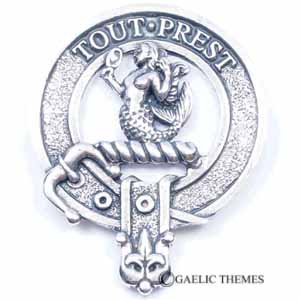Search
Murray
Select
- Design: Standard
- Clan Motto: Tout prest (Quite Ready)
- Notes: The progenitor of the family was Freskin, a Flemish knight who lived in the 12th century and worked as an enforcer for King David I. Freskin was granted lands in West Lothian. He was also given the ancient Pictish kingdom on Moray (Gaelic ‘ Moireabh’). Freskin and his sons intermarried with the house of Moray to consolidate their power. As a result, royal Pictish blood flowed in the family line. The earls of Sutherland descend from what is thought to be Freskin’s eldest son. In charters, Freskin’s other sons were named ‘ de Moravia’ , which became Murray in Lowland Scots. Sir Walter Murray, Lord of Bothwell in Clydesdale, served as regent of Scotland in 1255 and began Bothwell Castle. One of the greatest fortresses in Scotland, Bothwell would be the Murray seat until 1360 when it passed to the Douglases. Sir Andrew Murray rose against Edward I in 1297. When Murray was killed at Stirling Bridge, William Wallace took command. Murray has been considered a far stronger tactician than Wallace and it is speculated that if he had lived, the war for independence would have ended very differently. Sir Andrew’s heir, the fourth Lord, fell at the battle of Halidon Hill in 1333. There were many branches to the Murray name who disputed the chiefship and each branch still exists today. It was not until 1542 that the Murrays of Tullibardine are recorded using the undifferentiated Murray arms in the Lord Lyon Lindsay (precursor to the Lyon register). To consolidate their claim, the Tullibardines promoted two “bands of association” in 1586 and 1598 whereby the many Murray lairds recognized the chiefship of Sir John Murray, later first Earl of Tullibardine (1606). John’s son married an heiress to the earls of Atholl, Dorothy Stewart. Dorothy’s vast two hundred thousand acre estate became a Murray earldom in 1629, and a marquessate in 1676. Finally in 1703 the Murrays were created Dukes of Atholl, the highest order of Peerage. The first duke’s son, Lord George Murray, is famous as the great Jacobite general who led the ‘45 uprising. George was a courageous warrior and master strategist as well as a Gaelic speaker which helped endear him to his Highlander troops. It is widely assumed by historians that if he had been given a free hand by Prince Charles, the ‘45 could have ended far more successfully. As it was, George led the only successful charge at Culloden. He survived the battle but died in exile in the Netherlands in 1760. James VI, in 1600, granted the lands of Scone to Sir David Murray -- including the ancient hill upon which the kings of Scotland were crowned. This ceremony was last performed for Charles II in 1651. Sir David was created Lord Scone and later Viscount of Stormont. His descendants, the Earls of Mansfield, built Scone Palace. In 1736, the second Duke inherited through his grandmother rulership of the Isle of Man. As Lords of Man, the Dukes issued their own coins and held their own parliament. The sovereignty was transferred to the British Crown in 1765, but the Atholl arms still bear the symbol of Man, the Trinacria. Dating back before Culloden, the honor guard of the Murray chiefs, known as the Atholl Highlanders, is the only private army permitted in Britain. Presented with Colours by Queen Victoria in 1845, the unit still attends upon the current duke at ceremonial occasions.
Product Name
Price Starts At
$59.99
$34.99
$219.99
Product Name
Price Starts At
$39.99
$129.99
